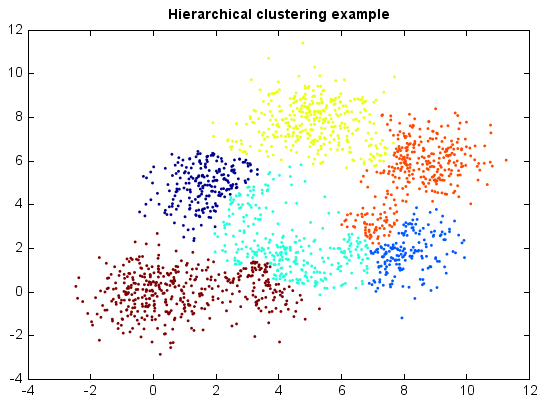Agglomerative Hierarchical Clustering¶
Agglomerative hierarchical clustering seeks to build a hierarchy of clusters in a bottom up approach: each observation starts in its own cluster, and pairs of clusters are merged as one moves up the hierarchy. The results of hierarchical clustering are usually presented in a dendrogram.
In general, the merges are determined in a greedy manner. In order to decide which clusters should be combined, a measure of dissimilarity between sets of observations is required. In most methods of hierarchical clustering, this is achieved by use of an appropriate metric, and a linkage criteria which specifies the dissimilarity of sets as a function of the pairwise distances of observations in the sets.
Hierarchical clustering has the distinct advantage that any valid measure of distance can be used. In fact, the observations themselves are not required: all that is used is a matrix of distances.
from miml import datasets
from miml.cluster import HierarchicalClustering
from miml.utils import smile_util
fn = os.path.join(datasets.get_data_home(), 'clustering', 'gaussian',
'six.txt')
df = DataFrame.read_table(fn, header=None, names=['x1','x2'],
format='%2f')
x = df.values
model = HierarchicalClustering(6, 'complete')
y = model.fit_predict(x)
scatter(x[:,0], x[:,1], c=y, edgecolor=None, s=3)
title('Hierarchical clustering example')


